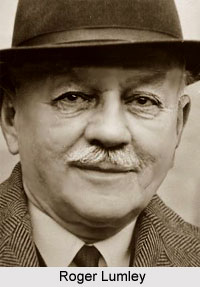 Roger Lumley, also known as Lawrence Roger Lumley, 11th Earl of Scarbrough, KG, GCSI, GCIE, GCVO, PC, DL TD, served as one of the Governors of Bombay Presidency in the year 1937, in former undivided India under the rule of the British East India Company. He was also one of the renowned a colonial administrators and a British Conservative statesman. He was born on 27 July 1896 as the son of Brigadier General Osbert Lumley. Lumley participated in the First World War with the 11th Hussars in France from 1916 to 1918. He remained attached to the Yorkshire Dragoons from the year 1921 till 1937. Roger Lumley, 11th Earl of Scarbrough, became a Member of Parliament (MP) for Hull East in the House of Commons from 1922 to 1929. Later he acted as Member of Parliament for York during 1931 to 1937.
Roger Lumley, also known as Lawrence Roger Lumley, 11th Earl of Scarbrough, KG, GCSI, GCIE, GCVO, PC, DL TD, served as one of the Governors of Bombay Presidency in the year 1937, in former undivided India under the rule of the British East India Company. He was also one of the renowned a colonial administrators and a British Conservative statesman. He was born on 27 July 1896 as the son of Brigadier General Osbert Lumley. Lumley participated in the First World War with the 11th Hussars in France from 1916 to 1918. He remained attached to the Yorkshire Dragoons from the year 1921 till 1937. Roger Lumley, 11th Earl of Scarbrough, became a Member of Parliament (MP) for Hull East in the House of Commons from 1922 to 1929. Later he acted as Member of Parliament for York during 1931 to 1937.
In the year 1923, he acted as Parliamentary Private Secretary to William Ormsby Gore; and from 1924 to 1926, he served as the Private Secretary to Sir Austen Chamberlain and afterwards to Anthony Eden. Lawrence Roger Lumley, 11th Earl of Scarbrough, KG, GCSI, GCIE, GCVO, PC, DL TD, was appointed as the Governor of Bombay Presidency on 18 September 1937 and was preceded by Sir Robert Duncan Bell, KCSI, CIE, who retired as the Acting Governor of Bombay on 30 May 1937. Bombay Presidency was one of the three Presidencies in British India, the other 2 including Bengal Presidency and Madras Presidency. It was first founded in the 17th century at Surat as a trading post for the British East India Company. The Presidency included the territories of modern states of Gujarat, Maharashtra, regions of Konkan, Kandesh and Desh and northwestern Karnataka state. Roger Lumley served in office till 24 March 1943 and was succeeded by David John Colville, 1st Baron Clydesmuir PC GCIE.
After Lumley returned from India, he served as acting Major General during the Second World War. Later he was appointed as an Honorary Colonel. When his uncle died in 1945, Lawrence Roger Lumley succeeded to the Earldom of Scarbrough. He later acted as Lord Chamberlain from the year 1952 to 1963. Lumley also served as Chancellor of the University of Durham from the year 1958 till 1969. He was later appointed as Grand Master of the United Grand Lodge of England.
Roger Lumley was knighted with Knight of the Most Noble Order of the Garter in the year 1948. He was also honoured with Knight Grand Commander of the Most Exalted Order of the Star of India (GCSI), Knight Grand Commander of the Most Eminent Order of the Indian Empire (GCIE), Knight Grand Cross of the Royal Victorian Order (GCVO) and Territorial Decoration (TD) medal of the United Kingdom.



















